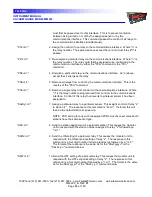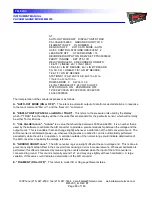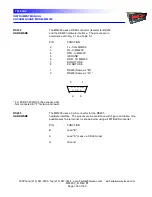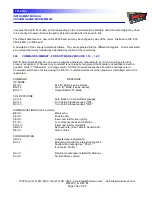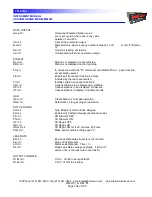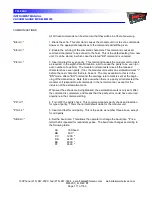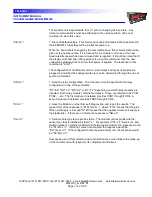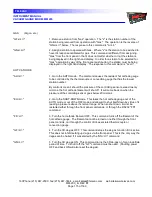
INSTRUMENT MANUAL
VACUUM GAUGE MODEL MM200
160Phone:(215) 947-2500 fax:(215) 947-7464 e-mail:sales@televac.com web site:www.televac.com
MM-200_im REV M
Page 100 of 160
TELEVAC
Except for the address and broadcast commands, all other communications on the
RS485 bus shall have the format of one start bit, seven data bits+parity (or eight bits
including parity, depending on the terminology used by the host software), and one stop
bit. If no parity is selected, then the format is one start bit, eight data bits, and two stop
bits.
NOTE: All communications are in ASCII.
The unit address and the broadcast command set is shown in the table below. These
codes are case sensitive.
ADDRESSING INDIVIDUAL UNITS
There are two methods available to address individual units or to send broadcast
commands.
The standard method to address an individual unit, the host communications format is set to one start bit, eight data
bits, even parity, where parity is in the ninth bit, and one stop bit(s). Under "Box Addresses" below, in the first and
third columns "NBMR" is the number of the individual unit. In the second and third columns "CODE" is the
character sent by the host to address that unit. When a unit receives it's code, the serial input port is enabled to
receive the command that follows. The commands are then identical to those given for RS232 operation. After
reception of the command, the input buffer is reset to receive another address or broadcast command.
An alternate method is available for software versions 1.36 to 2.13. This method is
to precede an address with a dollar sign "$". The MM200 will test each character to see
if it is a $ and then test the next character to see if it is the unit's address. The choice of
the $ is arbitrary and could be replaced by any of approximately 16 available characters
if other units on the RS485 line are already assigned this symbol.
BROADCAST COMMANDS
When a "broadcast" command is sent, all units are required to process the command.
The standard format that the host uses to send a broadcast command is one start bit,
eight data bits, odd parity, where parity is in the ninth bit, and one (or two) stop bit(s).
No response should be given by any of the units over the RS485 bus. In the table below
under "broadcast commands", the first column is the character sent by the host to invoke
the command. The second column gives the equivalent RS232 command that applies to
all units. The "X" command is like a clear command that is equivalent to all four of the
RS232 commands shown.

